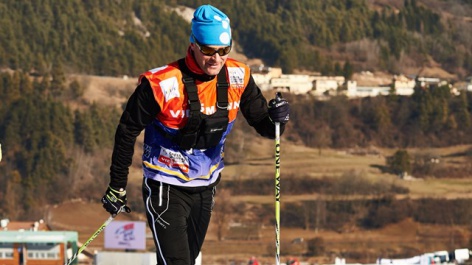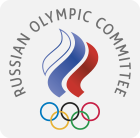


FIS Cross-Country Race Director Pierre Mignerey took a moment to reflect on the past season from the World Cup through the Tour de Ski to the World Championships, again it was an action-packed year.
How was the 2014/15 season?
The World Championships in Falun were a massive success and will stay in the memories for a long time. All together more than 280 000 spectators including 45 000 spectators packed around the courses and stadium for the skiathlon races attended Falun 2015. It was a great success for Cross-Country skiing and it should definitely be an inspiration for our future organizers.
Successful events are also made by drama and nice stories and from this point of view Falun 2015 was also a success with Petter Northug’s comeback, titles of local heroes Charlotte Kalla and Johan Olsson, two-time U.S. medalists in the ladies 10km, the terrible weather conditions of the 50km or the suspenseful men’s relay.
The rest of the World Cup season was also interesting with as usual the Tour de Ski and the first Tour victory for Marit Bjoergen as highlight. The only negative point was the relative weakness of the period between the end of the Tour and Ostersund with two weekends without World Cups.
On the other competition levels, I think that it’s important to mention that the longue distance races are attracting more and more people and many events are fully booked in only a few seconds.
All together I think that it was a good season for Cross-Country Skiing from a racing point of view but of course we should not forget that the lack of snow strongly impacted the global economy of skiing and the potential consequences for our discipline as a sport.
What were the biggest challenges last season?
We had to cancel the races in La Clusaz. Luckily Davos could take over and organise two World Cup weekends in a row but the snow conditions were really challenging almost all the winter. I take the opportunity to thank all our Organizers for the tremendous work that they have achieved with a special mention to Davos and Swiss Ski.
The snow conditions are and will be the biggest challenge for winter sports. Our new snow control process was a success but we clearly have to learn more about snow storage, snow production and snow preparation including salting. Collecting the experiences and sharing it with all the OCs should be a priority for us in the upcoming 2 years.
We also need to have some discussions regarding salting and to know in which direction we want to go. Should we use salt or other means of snow preparation as often as possible in order to always provide compact snow conditions or should we consider that we are dependent on the weather and only use artificial means of snow preparation when it is absolutely necessary or for safety reasons? This debate is important for the future of our discipline and the management of our events.
How is Cross-Country doing comparing to other winter sports in terms of TV? Is the discipline going in the right direction?
We will have a better overview in June but we already know that the viewing figures for the WSC in Falun are higher than Oslo 2011 and Val di Fiemme 2013 with a cumulative audience close to 250 millions. The first feedback for the Tour de Ski shows a stability compared to 2014-2015 and the TV audiences in Norway are at their best with impressive market shares (up to 90%).
On the other hand it looks like that we are losing in Germany and Poland which are traditionally our main markets in terms of TV audiences. This is once more a demonstration that the TV audiences are directly connected to results of the local stars and we are suffering from the difficult season for the German athletes and Justyna Kowalczyk.
Of course the TV audiences are very important for us and one of the fundamental aspects of modern sport but on the other hand we should not use only this factor to judge if the discipline is going in the right direction or not. I believe that the number of spectators on site, the number of people racing around the World at all competition levels, the media and sponsor interest are also among the important indicators.
Looking ahead to the future, what are the main topics, issues for the upcoming months?
I see three important topics for the future of Cross-Country Skiing in the short and middle term.
For the first time an athlete won a distance World Cup only using double poling in a classic race and it has been possible to be competitive without using kick wax on two distance World Cup races.
We knew that it will happen sooner or later as this has been the case since several years in sprint races and longue distance races but this has been a shock for the Cross-Country world. The impact was even amplified by very fast spreading to many races (at all levels and even kids events) around the world.
How should we react? Is the classic technique in danger? Is it a problem for the future of Cross-Country skiing? This debate is animating many discussions of the Cross-Country fans around the World and a lot of different opinions and ideas are on table at the moment.
Of course as a hardcore Cross-Country fan I can not say that I’m happy with that but on the other hand this is just a normal evolution of the sport. It is in the DNA of high performance sports to be in constant evolution, to push the limits and create new and faster techniques.
Therefore I have the feeling that this is an unstoppable evolution. But I’m also convinced that the classic technique is not dead and that all the other elements of classical style will still be used at the highest level depending on the course design and snow conditions.
My major concern is not the growing use of double poling but it’s collateral effects: the multiplication of borderline cases of classic technique infractions. We need to guarantee fair competitions and all the athletes should compete with clear and consistent rules.
This not as easy as it looks like because our current rules are in my opinion not good enough to give the chance to Jury to react properly. It’s necessary to give the appropriate tools to our TDs and we have quite important discussions at the moment in the Rules and Control Committee regarding this.
The second important question for the future is the development of Cross-Country skiing all around the World and especially in our main markets. Over the last few years the tendency is a dominance of the two or three biggest nations. I’m not concerned with a temporary dominance of one nation but in the long term this is a danger for our discipline. The best possible life insurance for Cross-Country skiing is to have a larger number of countries at the highest level.
Of course this is not so easy to infleunce but I’m convinced that our system (quotas, financial support) can be improved in order to support development programs and efficient World Cup programs in a larger number of nations. Some proposals going in this direction will be discussed in Varna.
Finally our calendar frame needs to be strengthened. As mentioned earlier we have a relatively weak period between the end of the Tour de Ski and the beginning of the WSC. January / February is the best period for the winter sports in terms of media and spectator interest. I think that we are on good track to solve this problem for the future and to build up stronger events in January. I hope that we will be able to approve this new long term calendar planning in June in Varna.
2015/16 season will not feature any title event, however, several highlights. What are they?
First of all it will be the 10th anniversary of the Tour de Ski and it will definitely be the highlight of the 2015-2016 World Cup season. The Tour will start in Lenzerheide with a new competition program including a sprint and a long distance race. Then we will move to Obersdorf and finish as usual in Italy with Toblach and Val di Fiemme.
I’m also looking forward to a compact scandinavian block in February starting from Drammen/Oslo, moving to Stockholm and Falun and ending in Lahti exactly one year before the WSC 2017.
Finally for the first time the World Cup season will end in Canada with a stage event. With 8 stages, 5 different iconic sites (Gatineau, Montréal, Québec, Lake Louise and Canmore), 2 provinces (Québec and Alberta) the Ski Tour Canada is going to be a great end for a World Cup season with strong events at all World Cup periods.
Source: fis-ski.com





